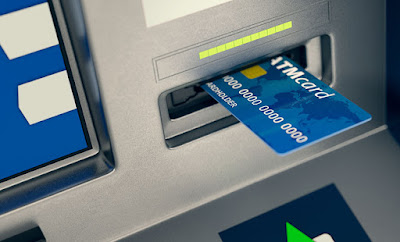Things to keep in mind when carrying out transactions through white label ATMs
The Reserve Bank of India on 7 March reviewed the guidelines for white label ATMs operational in India. The RBI has allowed these ATM service providers to take some additional measures that could improve their financial viability.
Let us understand what a white label ATM is.
White Label ATMs
Setting up an ATM involves costs, including the cost of the ATM premises, the ATM systems, security as well as cash management. In places where banks do not have a branch, the bank might not find it cost-effective to have its own ATM. Hence, a new category of ATM service providers has been allowed to start ATMs that can increase the penetration and availability of ATMs.
ATMs set up, owned and operated by non-banks are called white label ATMs and are authorized under the Payment and Settlement Systems Act, 2007, by the RBI. As per the list on the RBI website, at present, there are eight white label ATM operators in the country.
As a customer, using a white label ATM is just like using an ATM of any bank other than your card issuing bank. You can use your card for services like cash withdrawal and inquiry purposes. Until recently, these white label ATMs were not allowed to accept cash deposits, but the latest guidelines have now allowed these ATM operators to provide this service. They can also offer bill payment services through their ATMs.
There are also brown-label ATMs that are owned by these operators but are leased out to banks. Such ATMs operate like the ones belonging to the bank itself, including having the bank's branding.
Do you pay extra?
Yes, and no. Using these ATMs is similar to using an ATM of a bank other than the bank where you have your account. So as long as you are within your free ATM transaction limit, you will not be charged anything extra. For metro cities, the free transaction limit is at three transactions, and at five for non-metro cities. However, some banks provide a higher number of free transactions to specific categories of customers with premium bank accounts.
Is it viable?
When you make an ATM transaction at an ATM of another bank, the card-issuing bank pays a fee to the bank whose ATM is being used. In the case of white label ATMs, the card-issuing banks pay the fee to the white label ATM operator. This is called the ATM interchange fee.
Over the past few years, additional security measures have raised the costs for these ATM operators and these companies have been demanding an increase in this interchange fee, which is being resisted by the banks. At present, the ATM interchange fee for cash transactions is at ? 15 and it is ? 5 for non-cash transactions.
Moreover, the latest RBI guidelines have also focussed on improving the financial viability of these ATMs. Unlike bank ATMs, white label ATMs are also allowed to display third-party advertising in their ATM premises.
White label ATM operators like Tata Communications have also recently adopted a co-branding model of ATMs where it is entering into partnerships with newer banks to get another line of revenue. For a customer, these co-branded ATMs will be considered as the bank ATM that allows free transactions up to their respective limits.
**Source: MINT
For more details on Mutual Funds, Financial Planning & Personal Finance contact us at :
Phone No. 9582250638
Email id: contact@finviseindia.com
Visit our website: www.finviseindia.com




Comments
Post a Comment